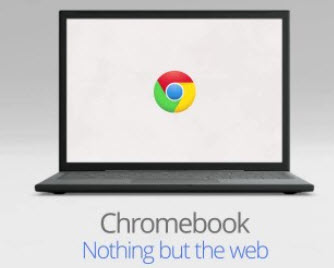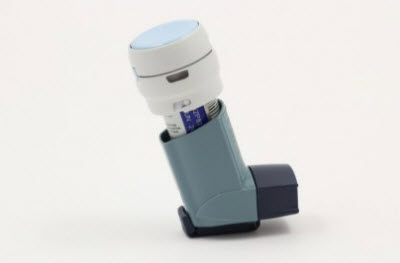Q: If Ultrabooks are just one of a diversity of devices, what else interests you guys now about where trends are going? What other devices are interesting to you?
DG: Well, from the devices, to me the big thing is that the lines will blur between devices. We used to be able to say, this is a desktop, this is a laptop, and this is a phone. Those were the lines, and it was very obvious what was what.
As operating systems start to stretch across the devices, it becomes a little bit less obvious. We have to define the line between traditional laptop, Ultrabook, hybrid, tablets, small tablet, large smartphone, and other devices. The lines between the devices will disappear and that will get really interesting over the next couple of years. We have to understand what that means from a compute perspective.
At some point, the only real line, the demarcation becomes what can I fit in my pocket and what can’t. And the second is the thing I think we started talking about earlier is the convergence around data. There is all kinds of data that is now accessible to you.
TS: Well, first I think I like that idea of how you can assemble a gadget or take one apart and change what it is. You can carry it around like a phone but then reassemble it in a way that does something else. We may be interested in devices that change their identities. Like the wearable devices.
DG: I mean one of the things that both Tony and my teams do is work with the CPU planners, who at times have to be thinking five, six, seven years out, and obviously it’s hard to predict. But we try to look at scenarios for the underlying technology. At some point, you see a world of intelligence embedded everywhere. What will that mean for computing?
People are wondering about the desktop now. Five years ago, six years ago, everyone, including people at Intel, were predicting desktops are over. They’re going to be gone. The reality is, the desktop market is thriving. I mean, in terms of certainly price and all those things, the desktop market is a very strong part of our business and part of the ecosystem, in part because of form factor renewal with the all-in-one and things like that.
I don’t want to say everyone feels this, but there is a security in the desktop. I don’t mean in a virus-protection sort of way but the emotional security of having all your stuff in one place where you know it is. That really matters to a lot of people, and the desktop emotionally represents that to a lot of folks. It also has a big screen that people want. It conforms to you. When you’re sitting at the desktop, you can put your foot up. You’ve got your keyboard on your lap. You can move the screen. There’s something that people really like about that flexibility the desktop provides them. It is resilient.
 Q: As we move to mobile devices, they need to access big servers in the cloud. Do you believe that the processing power will exist more, much, much more in the cloud than it does now?
Q: As we move to mobile devices, they need to access big servers in the cloud. Do you believe that the processing power will exist more, much, much more in the cloud than it does now?
DG: I think that processing power will exist in variety of forms in all aspects of the distributed network. I mean you need intelligence at all points of this network and at least what we assume with the Chromebook (pictured right, a Google-inspired machine that is always connected) is that it doesn’t need local processing power. In fact, it’s the opposite. So for a company like Intel, obviously we work very hard on the cloud.
TS: I want to pick up on this because it goes to the thought I asked you all before. Before we talked about this notion, we talked as an industry about convergence, and we don’t think that that’s happening.
So that’s from just an ethnographic point of view. We don’t think people are going to settle on one thing. There’s too much idiosyncrasy that exists, and there’s too many different kinds of things people want to do. One device won’t do it.
But where the industry has converged is on the notion of data and data mobility. For the last 50 years, we’ve been making everything analog into digital form. Now you have books and forms and driver’s licenses and all this stuff in digital form. But once you get everything in digital from, then you can start doing a whole bunch of new things, and now you have everything in data all the time.
The fact that we’re sitting here doing this is all data. You have this thing recorded. It’s all data. Once you have everything in digital form, then you can start running all kinds of analytics.
The data can actually be finding their own hypotheses about patterns in the data, and that can start running and happening on a continuous basis. That means you need a lot of processing power.
That convergence we think has occurred and is occurring on a going forward basis is that everything is data. The face that everything is movable across devices and everything has information about itself suggests that you can start creating new patterns and finding new value. It’s like the company that allows you to make your driveway in Palo Alto into a parking spot that somebody pays for.
So you’re driving down the street and you want a parking spot and you find somebody’s driveway. You pay them through PayPal or whatever. Then you park. Or you can give up your space here in the streets in San Francisco and sell it to somebody who’s driving around. It’s not even your space. You just have the right to the space.
If you’re starting to do this now and you expand it, you can do it for all kinds of things. You can do it for knowledge. You can do it for data. What you have, who you are, what you do can become a sellable commodity. You can do something with it, and that creates processing power not only in the cloud but also on the devices. As you’re walking down the streets, you can have sensors in these devices. This is a form of natural input. They will know where you are. They will know what you’re doing. What the temperature is. Where you’re walking. All these kinds of things not only provide you with the traditional location-based services and stuff but can actually give you indications of things that are happening around you and tell other people about things that are happening around you.
 So one example of that is something called an Asthmapolis. If somebody has asthma, they have a little inhaler (pictured right) for when they have an asthma attack. It has got a little global positioning system (GPS).
So one example of that is something called an Asthmapolis. If somebody has asthma, they have a little inhaler (pictured right) for when they have an asthma attack. It has got a little global positioning system (GPS).
When you puff, it sends a signal to your phone that sends a signal to the GPS that tells you where you were, and then that uses all kinds of other data like the temperature in the area, the pollen counts in the area. It knows these kinds of things. It knows your location. It knows the kind of environment you’re in, city, urban, rural, whatever; and then you can build out this massive database for every time somebody has asthma.
It’s a puff of an inhaler and you can start running patterns across that and sort of say, oh, look, these are kinds of triggers we have never seen before. These kinds of triggers affect this kind of person. You can actually relate it then to the person’s age or height or weight or other medical issues the person has.
And if you have all the data, you’re not relying on the sample size anymore. You’re relying on all the data, and you can start figuring out these sorts of little triggers, these little patterns, and now you’re a part of a value network that extends far beyond you and far beyond your asthma that’s creating an entirely new ecosystem of data. You’ll be creating data all the time, and that’s going to require a lot of processing power.
VentureBeat's mission is to be a digital town square for technical decision-makers to gain knowledge about transformative enterprise technology and transact. Learn More
